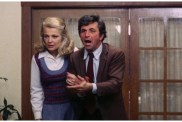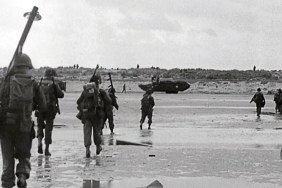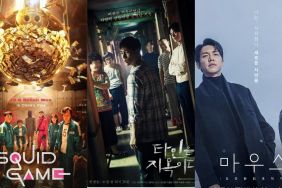
For the longest time I protested reading The Hunger Games books by Suzanne Collins because, again, I assumed it was a rip off of what I considered to be an important and powerful genre film. Eventually, the gushing over the book from my friends and relatives got the better of me and I broke down, I read the first installment.
It might shock you – if you haven’t discovered this yourself – when I tell you that there is very little in common with The Hunger Games and Battle Royale. Their only real similarity between them is they’re both about kids killing each other. That’s it. They’re about as similar as Kick Ass and Super, The Prestige and The Illusionist, or A Bugs Life and Antz.
I would now like to in detail point out the very key differences between both franchises, and thus end any debate among fans and haters.
A forewarning: There could be spoilers ahead, I will do my best to refrain from any Hunger Games spoilers as it is a newer franchise, but Battle Royale has been around for about 12 years so spoilers for it are fair game in my opinion.
The Setting
The general set up for the two stories is similar. A dystopian future where in a group of children are required to fight to the death until there is a victor. But is it really that simple? In Battle Royale, the country is in shambles for no particular reason; it can probably be linked to an economic crisis with so much of the population out of work as the prologue suggests. As a result of the downfall of Japan, the students have protested school and the adults being in fear of the teenagers pass the Battle Royale act. The act chooses one classroom of teenagers in the country and places them in a location to fight to the death in three days.
The Hunger Games, on the other hand, is set up with a country divided into different districts, all spread around the country of “Panem” – what remains of the United States and Canada. There was, at one point, an uprising against the totalitarian government known as The Capitol in which one of the districts was completely obliterated. As a result, every year two tributes are chosen from each district, a male and a female, to fight to the death as a way to acknowledge that The Capitol is still in control.

The set-up for the games are also quite different. Part of the aesthetic of Battle Royale is that the group of children selected are in the same classroom and thus all know each other. This reflects the very sadistic nature taken on by the Battle Royale act itself. The children are also selected in an effort to teach the remaining population of children behave or this could happen to you.
When the children from The Hunger Games are selected, the only ones that know each other are the ones from the same districts. Presumably, they might not know each other either considering their ages could be range from 12 to 18. This works toward the favor of the games as it should make it easier for them to kill their fellow tributes if they don’t know them. But in Battle Royale, where the very fact that they know each other and by their very nature should refuse to kill them is again part of the very sadistic nature of the story.
The Games
The actual “Hunger Games” event is made into an entire spectacle throughout the whole country. It was conceived and functions as a large-scale television even that is required viewing for the whole population of Panem. Every aspect of the game is part of the spectacle, too – the selection of tributes, the interviews prior to the games, the actual games, and the highlight reel/final interview with the victor.
Battle Royale‘s event is not televised. It is not known by anyone else in the country who was chosen for the challenge or who the victor is until the game is actually over, as seen in the start of the film. It’s not even known to the participants that they’re in the game until they’ve arrived at their destination. Many of them don’t even seem to know what the Battle Royale act is even when the rules of the game are being explained to them.
When the Hunger Games start, the tributes are taken to the area where the games will be held and are placed at starting points all around each other. They are not given any supplies to start with, and, if they so choose, must go get supplies near the starting point, but risk being killed by the other tributes. They can also have supplies sent directly to them by their sponsors at any time during the games.
The children in Battle Royale are all given a survival pack before they’re released into the playing field. Each pack contains different supplies that they might need, as well as a grab bag weapon which could range from an Uzi sub-machine gun to a crossbow to a frying pan.
Both stories do have a sort of fail safe in place in case things aren’t going the way those in charge had planned. The Hunger Games can have anything occur in the event that The Capitol thinks things are getting boring for the audience at home. They change the games in the service of having a more exciting game for the viewers. The game in Battle Royale changes both because the game masters just want it to and because they’re trying to encourage the participants to just go ahead and kill their competitors – a tactic used by The Capitol in The Hunger Games, but their primary concern is giving an enjoyable viewing product to the rest of the country.
The Characters
The behavior of characters in a story is a very important – albeit sometimes overlooked – aspect. It takes their decisions and actions that form what the story becomes and why you remember a character from the story anyway. This is entirely true for both of these stories.
The Hunger Games‘ Katniss is a relatable young woman with pathos and and fervor behind her. She serves as our gateway into the story, and does so well. As a character, she is, of course, familiar with The Hunger Games and, though she never anticipates actually playing in them, strategy and forethought are always at the back of her mind. The supporting cast in the story are also important regarding what’s happening here. Not all of them are in cahoots with The Capitol’s devious ways, some of them are there for Katniss. They help them get into a mindset that is necessary in their achievement throughout the story.

To me this is the defining difference between these two stories. Sure, there are some characters in The Hunger Games that are crazy, but literally almost every character in Battle Royale is totally off their rocker. There is little to no similarity in terms of character dynamics and behavior between these two.
The Violence
Battle Royale being a Japanese genre film one knows what kind of violence level to expect from it, and it doesn’t disappoint. The amount of graphically depicted violence and the bloodshed is very high. No punches are pulled when a character gets killed, and the violence is indeed glorified in it’s presentation. The viewer could choose to be repulsed by the level of violence, but its continual use serves as a reminder for what the story is and why it is necessary.
Since we’re seeing the world of The Hunger Games through the eyes of Katniss we’re getting a viewpoint on the violence. There’s also a lot more going on in her head than purely, Oh, better kill everyone! She has internal conflicts, she functions on a different level. She tries to justify her own use of violence against people. However, the violence committed by her fellow tributes is a little different. By my standards this was not a really violent story, but that’s not to say that the death of some of the characters aren’t gruesome, because they are.
Battle Royale clearly uses violence without thinking about it, it is – in essence – the centerpiece of the entire story. While the violence is a main threshold of The Hunger Games, it doesn’t serve as the only building block and isn’t presented as the primary focal point for the story.
The Tone

Battle Royale is quite different. The idea that the country has descended into madness is only a setup for what the story holds. There is no real subtext within the killing or the love story of the two leads that relates back to the idea of the country in turmoil or the purpose of the BR act (punishing the children). It also handles its violence with a very tongue-in-cheek quality at times. Examining the amount of blood that shoots out of a freshly made wound in Battle Royale is proof enough what kind of style it’s taking.
If you’ve made it this far, you’ll probably see the parallels between the two stories, or lack thereof. I can’t nail it in harder that there is almost nothing similar about these two stories except the core idea for the plot. But there is a lot more to the stories than simply their plot, as outlined above. Similar stories does not make it a “rip-off.” And what’s so bad about having movies with similar plots anyway? As long as the stories all have something different to say, a different theme, a different interpretation of an idea, interesting characters, compelling writing, and, of course, creative violence. Why can’t we have more of a similar idea?
You can follow Spencer Perry on Twitter at @ScarySpencer.









